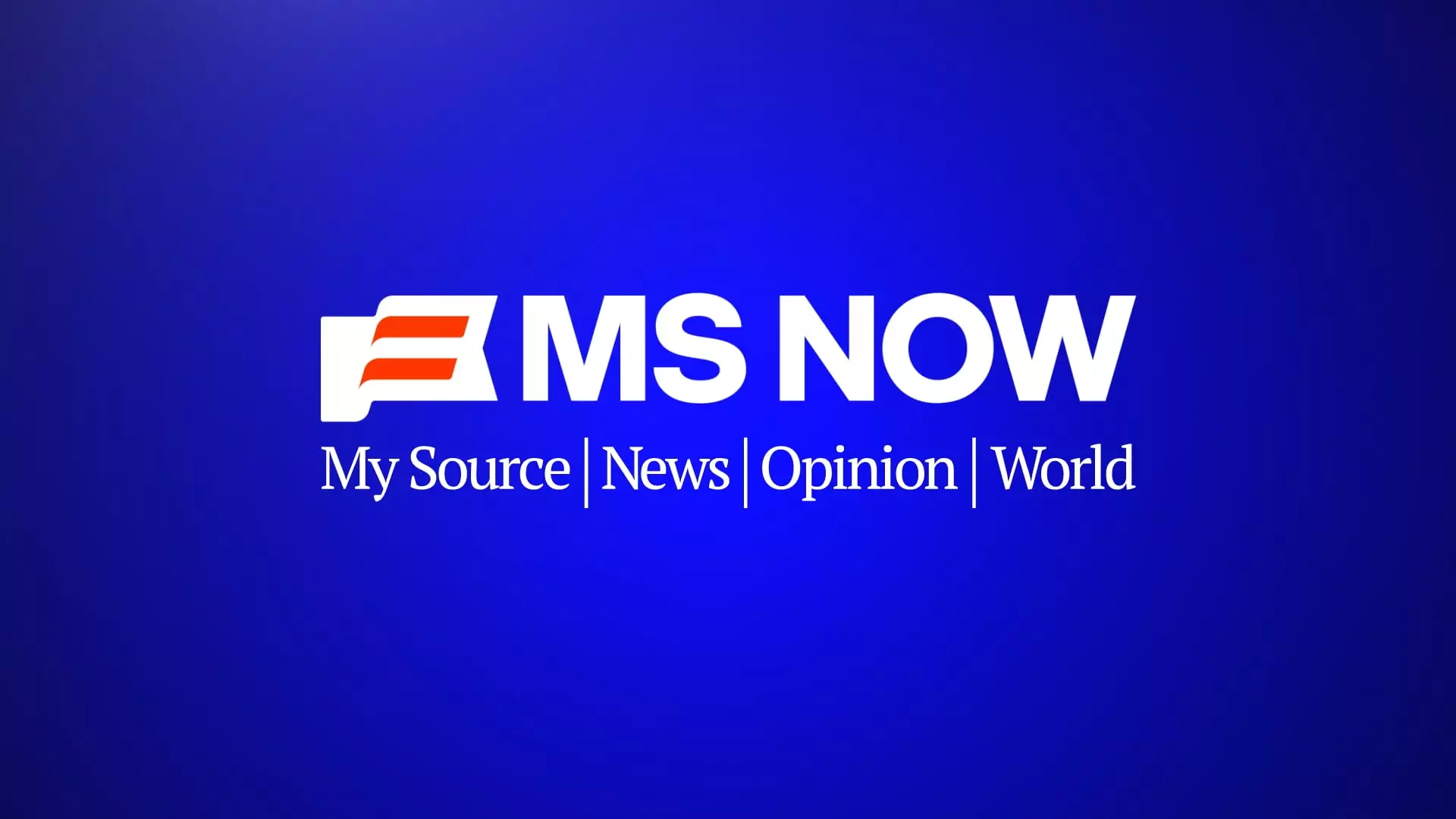In a move that signals more than just a superficial rebranding, Versant’s decision to rename MSNBC and shed its iconic peacock logo reveals a deeper strategic shift. While executives emphasize continuity in journalistic integrity, this change screams of an industry grappling with identity and relevance in a polarized media landscape. The new name, “My Source News Opinion World” or “MS Now,” sounds more like a marketplace of ideas tailored for a specific ideological profile rather than a trusted apparatus for impartial journalism. This shift raises an immediate concern: are American viewers destined to receive news filtered through a lens of opinion rather than objective reporting? Or is this merely a savvy repositioning aimed at reclaiming influence among an audience increasingly disillusioned with mainstream outlets?
This renaming signals an effort to carve out a distinct brand identity separate from NBC News—a move that might prove necessary in an era where partisan news outlets thrive while traditional networks struggle to maintain their credibility. Yet, the question remains: is this a strategic adaptation or a retreat into ideological insularity? If MSNBC’s main goal is to reinforce its role as a political echo chamber, it risks alienating moderate viewers who once believed in the network’s promise of balanced journalism. Conversely, if the rebranding helps clarify its position and restores focus on advocacy rather than impartiality, it could redefine ‘trust’ in a time where neutrality feels increasingly elusive.
The Political and Market Implications of the Shift
From a political perspective, this rebranding underscores the center-right liberal ideology that subtly influences Versant’s corporate trajectory. By emphasizing independence and positioning MSNBC apart from NBC News, the parent company aims to craft a more assertive voice—one that aligns with a broader conservative-leaning worldview that seeks to challenge the perceived dominance of left-leaning media giants. The move to establish a separate newsroom, recruit journalists from competing outlets, and launch a branding campaign suggests an ambition to appeal to voters who value patriotic reliability and cautious skepticism of the establishment media.
This strategic divergence is also about market positioning. With MSNBC still the second-most-watched cable news network, its leadership recognizes that maintaining relevance in a crowded media ecosystem requires more than sensational headlines—it demands an authentic identity rooted in ideological clarity. The planned logo changes and thematic rebranding are not just cosmetic—they are deliberate signals to viewers that MSNBC is choosing a side, a stance that could either invigorate its loyal base or further polarize public perception of the network’s credibility.
Furthermore, the decision to leave CNBC unaltered highlights the divergent paths within Versant’s portfolio, with CNBC representing a more business-focused, less politically charged brand. This contrast reflects a strategic clarity: MSNBC and its new identity will become the political insurgents, aligning with the conservative-libertarian segment that feels underserved in today’s media.
The Cultural Costs and Future Challenges
However, this bold rebranding comes with inherent risks. The departure from the familiar peacock, a symbol intertwined with MSNBC’s legacy, signifies a departure from a brand that’s been woven into the fabric of American media for decades. It may be a calculated gamble to distance the network from past controversies or biases; yet, it also risks losing the credibility and trust built over years of journalistic effort.
More critically, this move raises questions about the sustainability of ideological-driven news media in a polarized society. Will viewers continue to seek out news sources that clearly align with their pre-existing beliefs? Or will the trend toward hyper-partisan outlets lead to an ever-widening chasm, rendering traditional journalism obsolete? MSNBC’s new direction might energize its core supporters, but it might also deepen the divide that threatens healthy democratic discourse.
Lastly, the internal message from leadership about maintaining journalistic standards despite rebranding seems more like window dressing than a true commitment. If the network’s new identity prioritizes opinion and partisan framing over fact-based reporting, the public’s trust in the media’s role as a watchdog could erode further. In the end, this corporate strategy reveals more about the shifting power dynamics in media than about journalism’s future: it’s about dominance, influence, and ideological branding rather than truth and integrity.


Leave a Reply